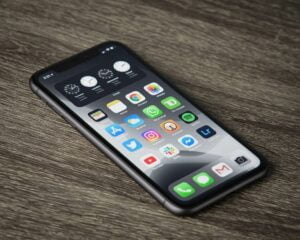5G has revolutionized the cellular network landscape, offering faster speeds and lower latency for mobile data. This next-generation technology is particularly beneficial for smartphone users, as it enables them to experience the full potential of their devices.
Carriers are actively deploying 5G networks, utilizing mmwave frequencies to deliver these advanced capabilities. However, not all smartphone users may want to utilize this cutting-edge technology on their Android phones.
Some users may prefer to limit their usage of mobile data and rely on a stable mobile network for their applications. Disabling 5G on your smartphone can have its advantages, such as conserving battery life and optimizing overall performance on the mobile network.
It is especially useful when you are in an area with limited mmwave coverage or when you want to switch to a different network mode. By understanding the impact of 5G network mode on your Android phone’s computer performance and why some users may prefer to disable mmwave connections, you can make an informed decision about whether or not to turn off 5G.
Reasons to turn off 5G on Android phones
Avoid Potential Health Concerns
Prolonged exposure to 5G radiation from xs computer towers has raised concerns about potential health risks. The advertisement for the xs computer towers highlights their advanced technology and powerful performance.
While scientific research on xs is ongoing, some individuals prefer to err on the side of caution when it comes to advertisement and esim. By turning off 5G and using an XS eSIM on your Android phone, you can minimize your exposure to radiation and potentially reduce health concerns.
Preserve Data Usage
Switching to a lower network connection, such as 4G or even 3G, can help preserve your data usage when using an eSIM. This is particularly beneficial if you have limited data plans or are in an area with weak 5G coverage, especially when using an eSIM. By disabling 5G, you can ensure that your phone with an eSIM doesn’t automatically connect to this network and consume more data than necessary.
Improve Network Stability
In some cases, users have experienced connectivity issues when connected to a 5G network. This may result in dropped calls, slower internet speeds, or inconsistent network performance. By disabling 5G on your Android phone, you may be able to improve network stability and reduce these connectivity issues.
To turn off 5G on your Android phone:
- Open the Settings app.
- Tap on “Network & Internet.”
- Select “Mobile Network.”
- Tap on “Preferred Network Type” or a similar option.
- Choose a lower network connection option such as “LTE/3G/2G (auto)” instead of “5G/LTE/3G/2G (auto).”
- Exit the settings menu.
Remember that turning off 5G means you won’t be able to take advantage of its faster speeds and lower latency when available.
While there are reasons to consider turning off 5G on your Android phone, it’s important to note that individual experiences may vary based on location and device compatibility.
Step-by-step guide to turning off 5G on Android phones
If you’re looking to turn off 5G on your Android phone, follow these simple steps:
Access the Settings menu
To begin, access the Settings menu on your Android device. You can usually find this by swiping down from the top of your screen and tapping on the gear icon.
Navigate to Network & Internet settings
Once you’re in the Settings menu, scroll down and look for the option labeled “Network & Internet.” Tap on it to open the network settings.
Locate Mobile Networks option
Within the Network & Internet settings section, keep scrolling until you find an option called “Mobile Networks.” This is where you’ll be able to manage your cellular network preferences.
Disable 5G toggle
In the Mobile Networks settings, look for a toggle that mentions “Enable 5G” or “Use 5G.” The wording may vary slightly depending on your device and Android version. Simply tap on this toggle to disable 5G connectivity on your iPhone. If you want to reset network settings on your iPhone or hide your phone number, follow these steps.
Turning off 5G can help conserve battery life and ensure a more stable connection if you’re experiencing issues with your current network. However, it’s important to note that disabling 5G means you won’t have access to its faster speeds and improved latency.
Remember that these steps may differ slightly depending on your specific Android device model and software version. If you can’t find the exact options mentioned above, try exploring different sections within your phone’s settings or consult your device’s user manual for more guidance.
With these straightforward instructions, you should now be able to easily turn off 5G on your Android phone if desired. Remember that it’s always a personal choice whether or not to utilize this technology based on individual needs and preferences.
Reasons to turn off 5G on iPhones and Samsung Galaxy phones
Minimize Battery Drain
Constantly searching for a 5G signal can drain your phone’s battery faster than you’d like. Turning off 5G can help conserve battery life, allowing you to use your phone for longer periods without worrying about running out of juice. So, if you’re not in an area with strong 5G coverage or don’t need the faster speeds, disabling it can be beneficial.
Address Compatibility Issues
While 5G is becoming more prevalent, some apps or services may not be fully optimized for it yet. This could lead to compatibility issues that result in slower performance or even app crashes. By turning off 5G on your iPhone or Samsung Galaxy phone, you can ensure smoother operation and avoid any potential glitches until these compatibility issues are resolved.
Reduce Interference with Other Devices
In close proximity to other wireless devices, such as smart home gadgets or Bluetooth accessories, the presence of a strong 5G signal on your phone might cause interference. Disabling 5G can help minimize any disruptions and ensure that all your devices work harmoniously together without any connectivity hiccups.
So, whether you want to extend your battery life, address compatibility concerns, or reduce potential interference with other wireless devices nearby, turning off 5G on your iPhone or Samsung Galaxy phone can be a smart move.
Step-by-step guide to turning off 5G on iPhones
Open Settings and access Cellular Data Options
To turn off 5G on your iPhone, start by opening the Settings app. Once you’re in the Settings menu, look for the option that says “Cellular” and tap on it to reset network settings on your iPhone. From there, select “Cellular Data Options.”
Choose Voice & Data and select a non-5G option
Within the Cellular Data Options menu, you’ll find an option called “Voice & Data” to hide phone number. Tap on it to proceed. Here, you will see a list of available network options for your iPhone. To turn off 5G, simply choose an alternative option like LTE or any other non-5G network.
Enjoy your non-5G connection
Once you’ve selected a non-5G option, your iPhone will no longer connect to 5G networks. Instead, it will use the chosen alternative network for cellular data and voice services.
By following these simple steps, you can easily disable 5G on your iPhone if desired. Whether you prefer to conserve battery life or have specific reasons for not using 5G, this guide provides a straightforward solution.
Remember that disabling 5G may impact your internet speed and overall connectivity experience. However, it’s always good to have the flexibility to choose which network technology works best for you.
Step-by-step guide to turning off 5G on Samsung Galaxy phones
If you’re using a Samsung Galaxy phone and want to turn off the 5G feature, it’s actually quite simple. Just follow these steps:
Go into the Settings menu of your Samsung Galaxy phone.
- Unlock your phone and find the “Settings” app. It usually looks like a gear icon.
- Tap on “Settings” to open it up.
Tap Connections, then select Mobile Networks or Network Mode.
- Once you’re in the Settings menu, scroll down until you see “Connections.” Tap on it.
- Within the Connections menu, look for an option called “Mobile Networks” or “Network Mode.” Select it by tapping on it.
Switch from “Auto” or “LTE/3g/2g (auto connect)” mode to LTE only or another non-5G option.
- In the Mobile Networks or Network Mode settings, you’ll see different options for network connectivity.
- Look for an option that says something like “Auto,” “LTE/3g/2g (auto connect),” or similar. This is usually the default setting that enables 5G.
- To turn off 5G, switch from this Auto mode to an alternative option such as “LTE only” or another non-5G choice available in your phone’s settings.
That’s it! By following these steps, you can easily turn off 5G on your Samsung Galaxy phone. Remember that not all Samsung models may have the same exact interface or options, but generally speaking, these instructions should work for most devices.
Exploring low data mode for maximizing data usage on 5G
Reduce data consumption with Low Data Mode feature in apps
To make the most out of your 5G data, consider utilizing the Low Data Mode feature available in some apps, such as streaming services. By enabling this mode, you can significantly reduce your data consumption while still enjoying your favorite content. This feature optimizes the app’s performance by minimizing the amount of data it uses without compromising the overall experience.
Limit background data usage with Data Saver mode
Another effective way to maximize your data usage on 5G is by enabling the Data Saver mode on your Android device. This setting allows you to restrict background data usage, ensuring that only essential apps and services consume cellular data. By doing so, you can prevent unnecessary data drain and allocate more of your precious 5G allowance to activities that matter most to you.
Minimize reliance on cellular data by using Wi-Fi networks
One practical approach to ensure efficient utilization of your 5G network is by leveraging Wi-Fi networks whenever possible. Connecting to a stable Wi-Fi connection not only provides faster internet speeds but also reduces reliance on cellular data. Take advantage of trusted Wi-Fi networks at home, work, or public places like cafes and libraries to conserve your mobile data for times when Wi-Fi isn’t available.
By implementing these strategies, you can effectively manage and optimize your cellular data options on a 5G network. The Low Data Mode feature in select apps helps minimize excessive consumption, while enabling Data Saver mode limits background usage. Utilizing Wi-Fi networks reduces dependency on cellular data altogether.
Taking control of your 5G experience
Now that you have learned about the reasons to turn off 5G on your Android phones, iPhones, and Samsung Galaxy phones, as well as the step-by-step guides to do so, you can take control of your 5G experience. By disabling 5G when it’s not necessary, you can conserve battery life and reduce potential health concerns. Turning off 5G can help you maximize your data usage by exploring low data mode.
To make the most out of your smartphone experience, it’s important to stay informed and adapt to new technologies like 5G. By following the steps provided in this blog post, you now have the power to choose when and how you want to use 5G on your device. Take control of your 5G experience today and enjoy a more personalized and efficient mobile journey.
FAQs
Can turning off 5G improve my battery life?
Yes, turning off 5G when it’s not necessary can help improve battery life on your device. Since 5G consumes more power compared to other network options like LTE or Wi-Fi, disabling it can extend the time between charges.
Will I still be able to use my phone normally if I turn off 5G?
Absolutely! Disabling 5G will only affect your connection speed in areas where there is a strong 5G signal available. Your phone will automatically switch to LTE or another compatible network option without any disruption in functionality.
Are there any health concerns associated with using 5G?
While some people have expressed concerns about the potential health effects of prolonged exposure to higher frequency radio waves used by 5G networks, current scientific research suggests that they are safe for everyday use. However, if you still have concerns or prefer to err on the side of caution, disabling 5G when not needed is a viable option.
Can I switch back to 5G whenever I want?
Yes, you can easily switch back to 5G whenever you want. Simply follow the step-by-step guide provided for your specific device in this blog post, and you’ll be able to enable or disable 5G at your convenience.
Will turning off 5G affect my data usage?
No, turning off 5G will not directly affect your data usage. However, by exploring low data mode on your device, as mentioned in this blog post, you can further optimize your data consumption while still enjoying the benefits of a fast and reliable connection.





